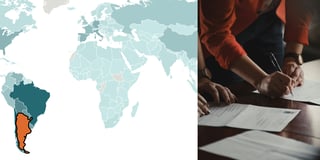A continent on the rise
Last week, we saw that German streets will be filled with less and less young people. This will affect the size of the German population: In 2100, Germany will have 15% fewer inhabitants than it has these days (according to the UN).
But while lots of (mostly European countries) shrink, there are many countries where the population grows rapidly. You might think of Asian countries like India. But when it comes to the share of the human population on each continent, Asia might reach its peak in the coming years:
Africa will be huge. The UN predicts that in 2100, the world will be populated by almost as many Africans as Asians. Let’s set this growth in context: In 1950, more Europeans and North Americans were alive than Africans. In 2100, there will be four times as many Africans as Europeans and North Americans together1.
However, let’s remind ourselves that these are projections. The further we go into the future, the more uncertain it becomes. Wikipedia makes that uncertainty clear when talking about world population projections: “Longer-term speculative scenarios over the next two centuries can predict anything between runaway growth to radical decline (36.4 billion or 2.3 billion people in 2300)".
Chart choices
I actually wanted to create a Stacked Bar Chart with this data, but I’m glad I listened to my colleague Gregor in the last minute and created an Area Chart. Area Charts have axes with continuous scales, so it’s perfect for time data like our one. The years in our data are not evenly spaced (1950, 2017, 2030, 2050, 2100), and the x-axis of our chart will show the data in the right intervals (hover over the chart to see what I mean!).
The most important decision you can make while working with Area Charts is the order of your stack. Sorting the countries from smallest to largest share would not have been the best idea. It’s easiest for humans to estimate the size of the data that’s at the bottom of the chart, resting on the straight axis line. That’s why I put Africa there. It’s the most important continent in our data, so let's make sure that we can read the values of it well.
Because Africa is so important for the statement I want to make, it also gets the most aggressive color. Basically, I can lead the eye of readers with colors: I want them to look at Africa first (super red it is!), then Asia and Europe (yellow and orange), then North and South American (they’re really not important for my statement, so they get a subtle grey).
In the last four weeks, we’ve been talking about age. Since that’s getting a bit old (pun definitely intended), we’re changing topics next week. Have a good week!



